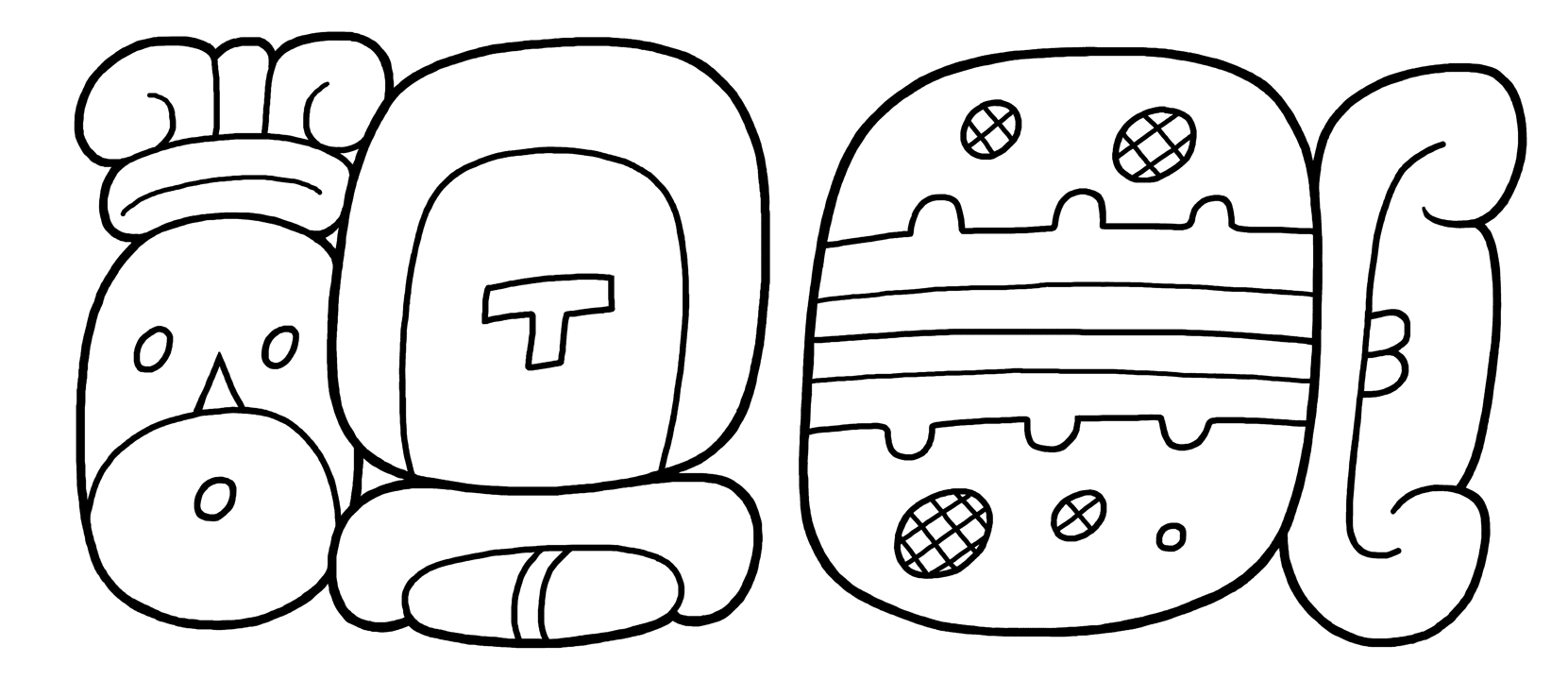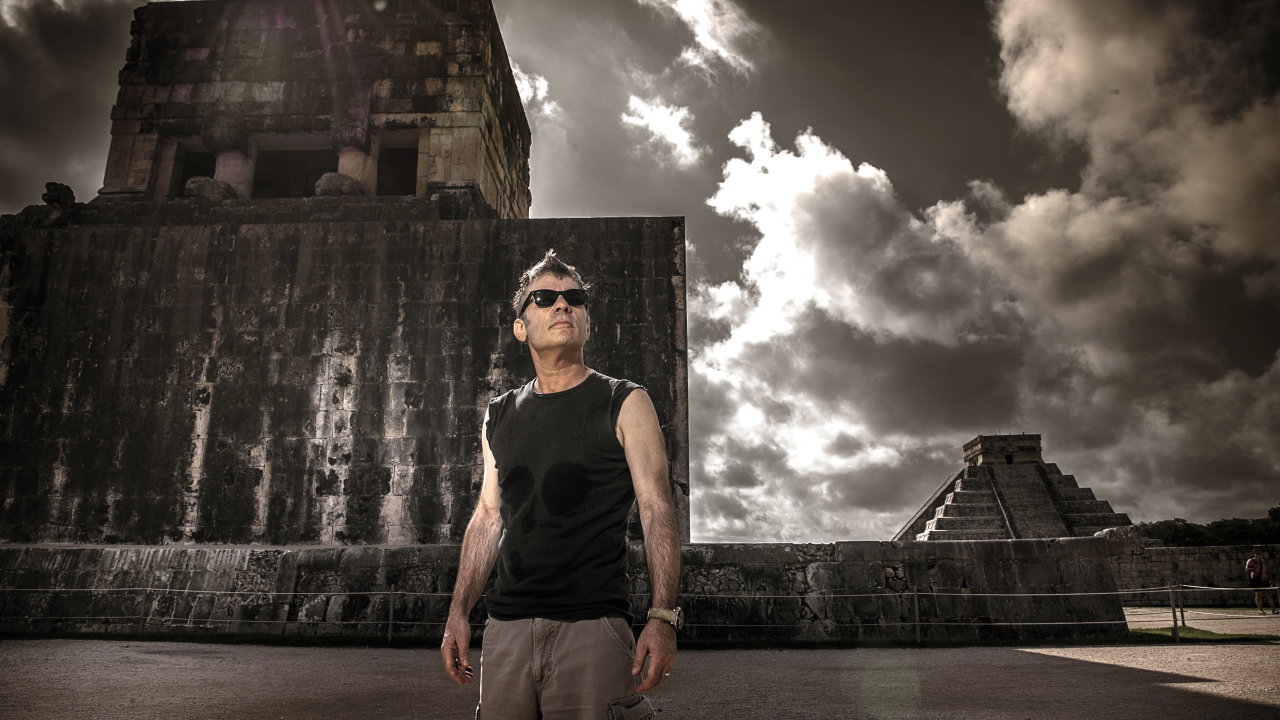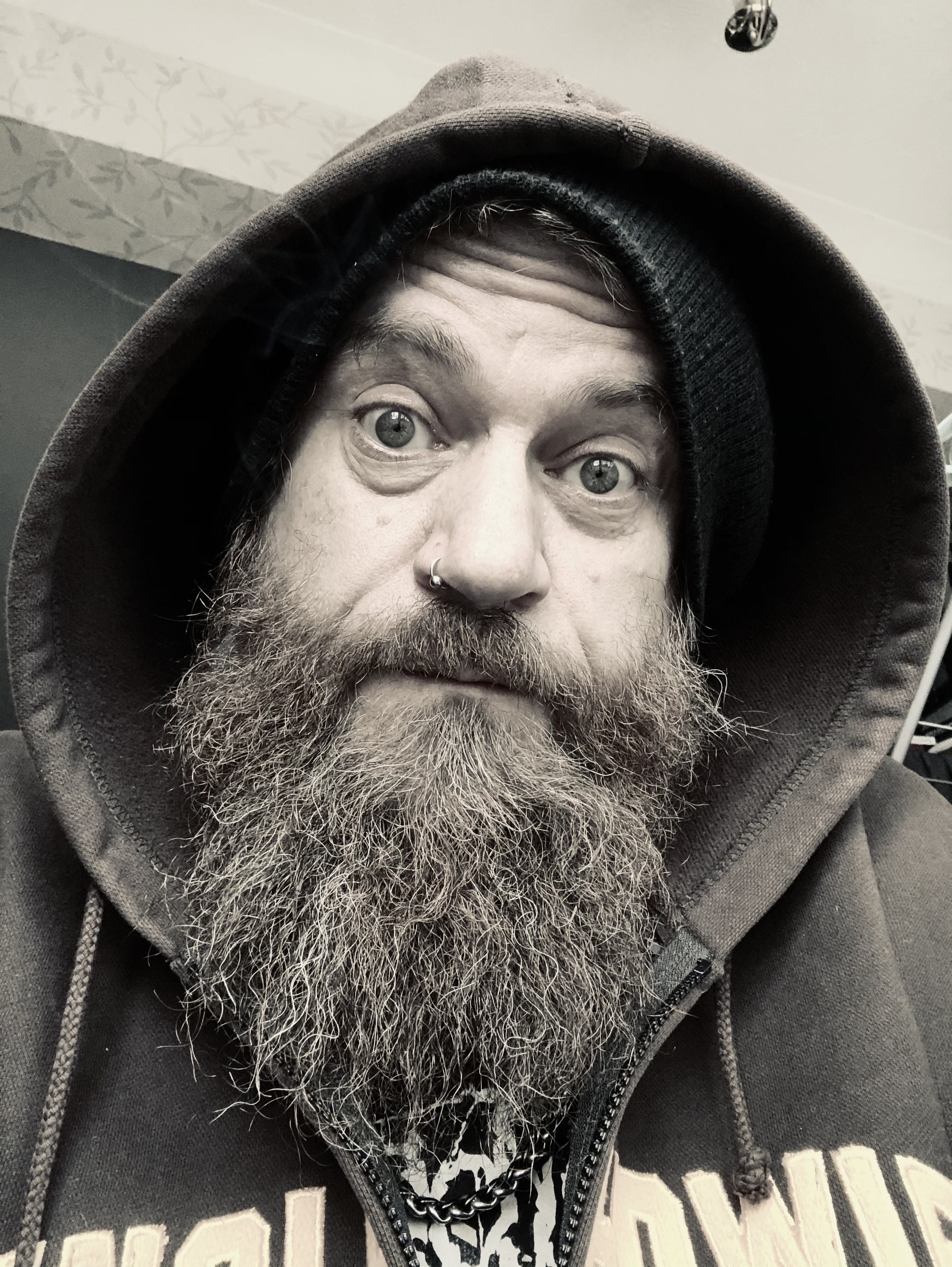Not long after completing their ambitious, Mayan-inspired masterpiece, Iron Maiden received news that threatened to stop them in their tracks. Now, for the first time, Steve, Bruce, Janick, Adrian, Dave and Nicko tell us how they overcame a matter of life and death.
Are you sitting comfortably? It’s time for another implausible tale from the most epic and revered saga in heavy metal history. Having stalked the planet like some imperious, multi-limbed colossus for more than 35 years, fuelled by creative verve, an unerring dedication to hard work and an uncompromising vision, Iron Maiden arrive in 2015 buoyed by an enviable reputation and the love of millions, but also weighed down by fearsome levels of expectation.
Admittedly, the unveiling of every new Iron Maiden album is a major event. This time, however, the album concerned – The Book Of Souls, Maiden’s 16th studio effort – has nearly been overshadowed by events that took place after the music was etched in sonic stone. Back in February of this year, the news broke that vocalist Bruce Dickinson was being treated for a cancerous tumour on the back of his tongue, and suddenly, for the first time ever, Iron Maiden’s impervious steel façade began to exhibit a hint of vulnerability. In metal terms, Iron Maiden are immortals. Living legends. Heroes. But late in 2014, they were suddenly confronted with the prospect of losing their singer and, as a result, hitting the dreaded career buffers with a chilling thud of finality.But then, of course, this is Iron Maiden; these guys are made of much sterner stuff and are by no means finished with their tenure as metal’s most-loved band. As the release of The Book Of Souls draws closer, we speak to all six members of the band about the turmoil of the past year and the creation of what may be the finest record that Iron Maiden have ever made…
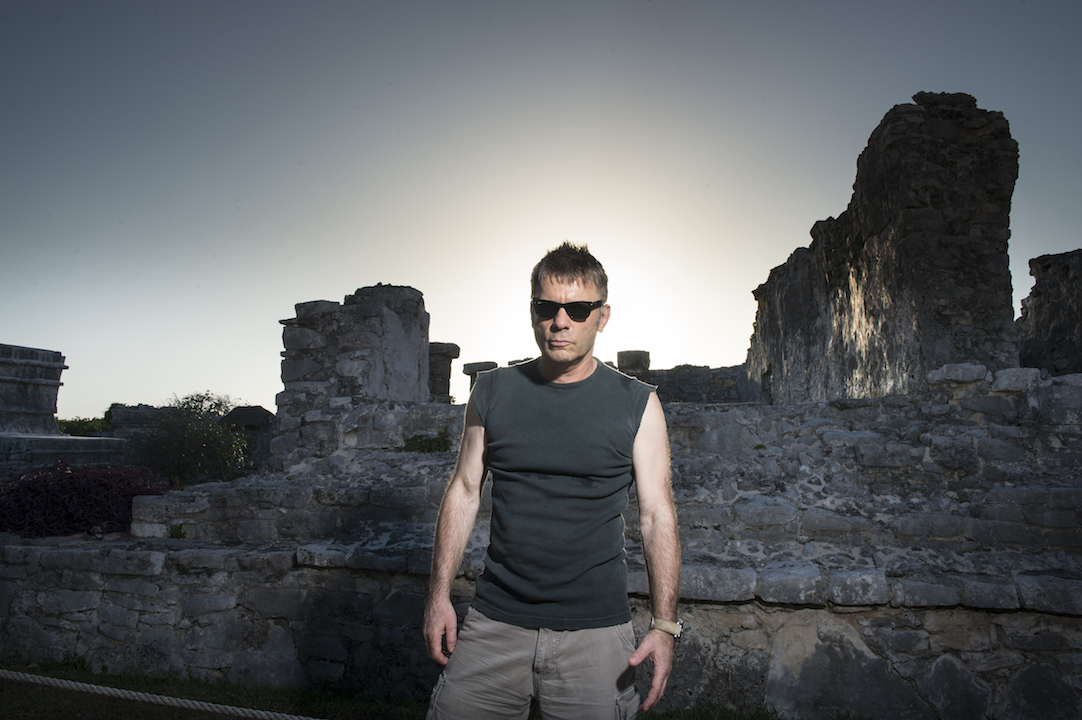
“I had a lump in the side of my neck, like when you get a really bad cold or flu and your glands come up,” says a comfortingly healthy-looking Bruce Dickinson, several months after being given the all-clear from cancer. “I thought it was just some bloody bug, as you do. But it didn’t develop into a cold or flu and I was singing fine. A local French GP came down to the studio and had a little poke at it and a little look down my throat, and he said, ‘Well, you need an MRI of that, you need a CAT scan of your chest and lungs, and we need to stick a needle in that to see what’s inside…’ I was like, ‘Ohhh, shit!’” Bruce sits back and takes a deep breath, momentarily jarred by the memory but still smiling because, as we all now know, this tale has a happy ending.
“The irony of it was, I went away and got stuck into Google and Wikipedia and everything else,” he continues. “And six weeks before I went to see the doctor, I got the diagnosis spot-on, even down to the kind of tumour that it was. Once I got the diagnosis, I just said, ‘I’m not doing anything now, for the rest of my life, until I get rid of this. It’s my full-time occupation now!’”
Bruce was diagnosed with squamous cell carcinoma, a relatively common form of cancer and, fortunately, one that his oncologist1 thought eminently curable, not least because his patient was in fine health and considerably more sprightly than most men in their mid-50s. Of course, Bruce’s reputation as a heavy metal polymath and unstoppable force of nature made him seem one of the least likely people in our world to be struck down with such an illness. “None of us knew,” shrugs Steve Harris, still exasperated by his friend’s misfortune. “He didn’t know. He’d sung fantastic in the studio. He sounds better than ever, so there was no indication that there was a problem with his throat,but lo and behold, he had a test and it came back that he had a tumour. It was scary stuff. Seeing as he’s the youngest and arguably the fittest in the band, it was a massive shock to him and to everyone else as well. But he’s a very positive person, as we all know. He’s full of beans and he’s a fit guy, so he’s come through it.”
As ridiculous as it sounds, from the outside at least, Bruce’s welcome recovery seemed almost inevitable; his legendary quantities of get-up-and-go propelled him through weeks of gruelling, intimate and intricate treatment and on, towards the happy news that his tumour had gone and his future prognosis was excellent. Job done. Bruce seems to have weathered this storm by delving deep into the science of his treatment – he regales us with an incredibly detailed rundown of everything he’s experienced, eyes twinkling with the enthusiasm of a geek – but nonetheless, beating cancer is an exhausting business and he cheerfully admits to having struggled at numerous points. “The last two or three weeks were particularly miserable,” he says. “I was on the morphine and a liquids-only diet, and you lose your sense of taste completely. Everything tastes like cardboard, plasticine or sand. I never realised how essential taste is to appetite until I didn’t have it anymore. But what got me through was custard! The inside of your mouth disintegrates for a period of time… it’s called mucositis and it’s not very nice. So I couldn’t speak, because it hurt to use my tongue, but I could take big gulps of custard every day. You end up with the metabolism of a hummingbird during this treatment because you’re being cooked from the inside out, but your body’s also trying to heal itself rapidly, and it goes into overdrive. I think that’s one reason why you lose weight. It’s simply because your system is banging away and then eventually it all dropped back down to normal. It’s fascinating. Basically, I am my own science project!”
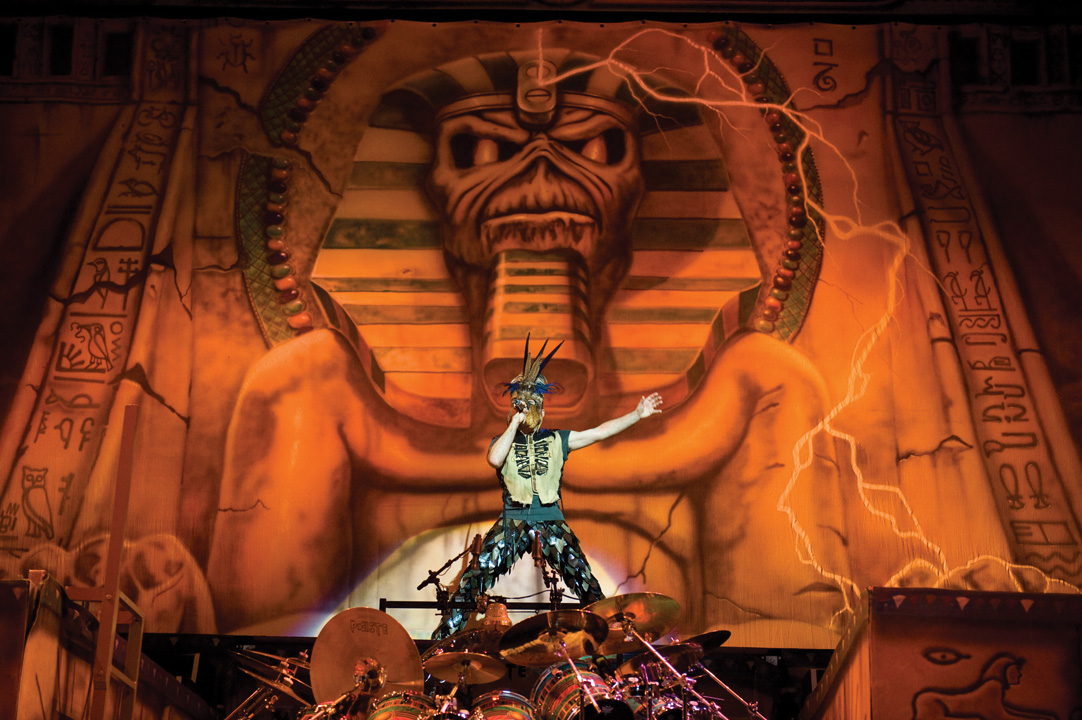
Rewind a few months to the autumn of 2014. Maiden were holed up in Guillaume Tell Studios in Paris with long-time producer Kevin Shirley, to begin work on the follow-up to 2010’s widely lauded The Final Frontier. Returning to an old stomping ground, they were in high spirits after completing another round of momentous touring that culminated in an all-guns-blazing performance on the hallowed Knebworth turf at Sonisphere. In contrast to some of their arena-filling peers, all six members of Maiden were raring to go, armed with fresh ideas and thrilled by a new opportunity to make music together.
“To be at the studio in Paris was a major influence on the album,” says guitarist Adrian Smith. “We felt at home straight away. It hadn’t changed – it still had the same carpet! The scary thing was that it had been 15 years since we’d been there, and there was a sharp intake of breath there, like, ‘Oh, blimey…’, but once we got going, it was a great environment. I loved being in Paris, for that couple of months. It was the end of the summer and it was beautiful, and inspiring all around. Everyone felt that and it really clicked.”
“It’s a proper recording studio,” notes one of Adrian’s six-string compadres, Dave Murray. “It’s an old French cinema converted into a studio, so the ambience and the vibe are brilliant. It’s beautifully Art Deco with huge, wall-mounted speakers and that old, oaky vibe. And it was familiar territory, which helps a lot.”
“The truth is, the band weren’t quite ready when they arrived at the studio,” reveals Kevin Shirley, ”but Iron Maiden
is a juggernaut and it’s not easy to change plans when things are moving! Things happen in people’s lives that make it more complicated, but you can’t stop the juggernaut. But there was a wonderful feeling in the studio. Everyone brought ideas, we recorded songs when they were fresh and everyone played incredibly well. These are challenging songs but they pulled it off. It’s the Maiden album I’m most proud of.”
Indeed, something special happens when these six guys pool their talents. The four previous albums recorded by this – arguably definitive – lineup have been very well received, adding momentum to the band’s ongoing drive to conquer the planet. Maiden consistently defy the usual laws of veteran bands as they near the end of their careers. As far as those involved are concerned, album #16 was approached with the same passion and intensity that informed its 15 predecessors. “The real magic was that we were so happy to be in the studio together again, like kids in a candy store,” says drummer Nicko McBrain. “The essence of this band is making music together. It’s wonderful to have 30 years under our belt and all these wonderful gigs around the world, but we’re still all about creativity and making a new masterpiece. And that’s what we’ve done.”
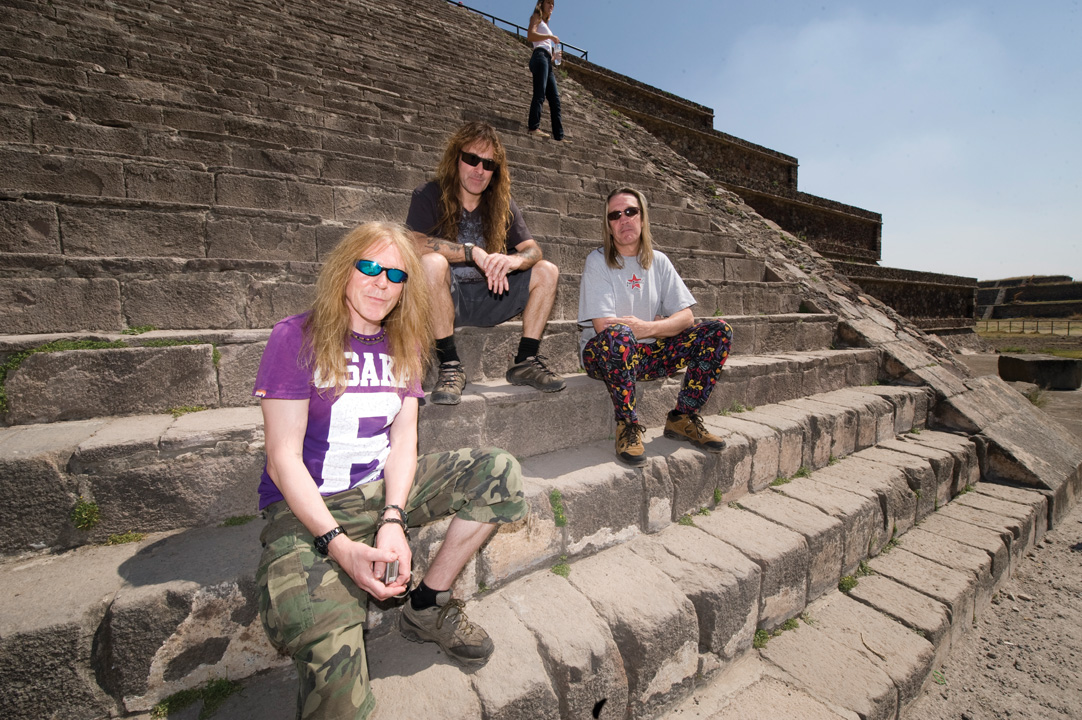
There is a rather warped symmetry to the way that The Book Of Souls’ gestation and birth have worked out. Despite being impossible to talk about without the looming backdrop of Bruce’s cancer scare casting a shadow, Maiden’s new album would have generated more than enough talking points on its own. Firstly, this is the band’s first bona fide double album – clocking in at a staggering 92 minutes in length. Secondly, it’s very obviously the most adventurous and epic record Maiden have ever made. Finally, and most significantly, The Book Of Souls begins and ends with songs written entirely by Bruce – If Eternity Should Fail, quite simply the heaviest opening track in Maiden history, and Empire Of The Clouds, a sprawling, complex and audacious tribute to the doomed final journey of the R101 airship in 1930… which, at a startling 18 minutes and 1 second, is the longest song that Maiden have ever committed to tape. If anything sums up Bruce’s formidable energy levels and wide-eyed delight at the mere thought of embarking on the craziest of projects, this song is it.
“It all started when I won a piano in a raffle!” says Bruce. “Ha ha! I did! I won an electric piano in a raffle. I got it home and started playing around with it. It was around the time that Jon Lord4 got sick. We were talking about possibly working together at the time, so I was mucking about with some things. Sadly Jon left us, but I continued to muck around on the piano. That was the genesis of the whole thing. I was originally trying to write a song about the First World War and the triplane, but then I went round Adrian’s place and we wrote Death Or Glory. That’s a song about triplanes and the First World War, so we’d done that one. I suddenly thought, ‘What about the R101?’… and the idea kept growing and growing.”
Eighteen minutes of wildly evocative and theatrical heavy metal that tells the R101’s tragic story, Empire… is a miraculous and thrillingly fearless piece of work, even by Maiden’s exacting standards. It’s almost as if Bruce was destined to take centre stage this time round.
“I watched Empire… develop from the very beginning,” recalls Kevin. “We mapped out all of Bruce’s ideas and it grew into this monster! The big surprise was how theatrical it became. But it’s such a strong song. Nothing is superfluous. I think Steve was apprehensive about it to begin with, like, ‘How are we gonna do this?’ but it came together beautifully.”
“He had all these bits and pieces on the piano, like a mad professor,” Steve recalls, visibly amused by the memory. “I said, ‘One day it’ll be like Monty Python; I’ll come in and you’ll be sitting at the piano with nothing on, looking over your shoulder like a madman…’ Ha ha! I’m glad that didn’t happen! But when we were recording it, we had a few moments when we were looking at each other thinking, ‘What the hell’s gonna happen next?’ But that just added to it. I actually said to him, ‘Fuck me, you’ve outdone me, you bugger! This is an absolute masterpiece…’ and it is. Empire… is almost a rock opera… it reminds me of a West End musical. But better. Ha ha ha!”
“At a time when people’s attention spans have dropped to as low as they’ve ever been, I love that we’re a band that can come out with an 18-minute track,” says guitarist Janick Gers. “You’re never sure what you’re going to get with Maiden. You know it’ll sound like Maiden, ’cause that’s us, but the possibilities are endless. You can ask, ‘How long is a piece of string?’ Well, Empire… is as long as it is. We’re not scared of doing stuff like that.”

If anything encapsulates the humble but steely spirit of Iron Maiden, it is the way that the band immediately postponed the release of The Book Of Souls and any touring plans when Bruce’s diagnosis came to light. Unlike many veteran bands, Maiden are still very much a united force, both onstage and behind the scenes: friends to the end and all 100% committed to the cause. It’s obvious from speaking to any one of them how much love, respect and mutual admiration exists between them these days. As a result, things tend to go pretty smoothly in the band’s world. But while all six members were clearly delighted by the recording experience, The Book Of Souls was not created without a little turbulence bringing an edge of darkness to the songs.
“Usually we pick a period of time where we want to make the album, we give ourselves ‘x’ amount of weeks to write it, and that’s it,” Steve explains. “It’s always worked well before, but obviously you can’t plan for unforeseen things happening. I won’t give you the sob story, but basically I lost two people, an old schoolfriend and a member of the family, right bang at the time we were supposed to be writing. And when you’re trying to be creative, that’s very difficult. But you can turn it into a positive. If I’m honest, this was one of the hardest times of my life, but the guys were really good about it and really positive and helped me through it. We’ve always done that. Everyone’s had traumas over the years, and we always help each other, and it makes the band stronger. Everyone goes through hard times, and if you get something positive like this album at the end of it, that’s really fine.”
The tough time that Steve describes may have precluded Maiden’s de facto leader from contributing quite as much, in songwriting terms, as he has been known for throughout the band’s history. But one silver lining lurking behind that black cloud is that The Book Of Souls is a much more collaborative effort than most, with everyone except Nicko scoring at least one writing credit. But beyond the finer details, the most striking thing about the album is how cohesive, engaging, substantial and, most of all, exciting it is. There are huge melodies, instantly memorable choruses and moments of triple-guitar abandon by the score, the album’s 92 minutes flying by in what seems like half that time. Everything from Steve’s 13-minute The Red And The Black through to Bruce and Adrian’s double dose of succinct Maiden bombast – first single Speed Of Light and the aforementioned World War I triplane anthem Death Or Glory oozes the kind of vitality and exuberance that bands of this vintage rarely muster.
“Yeah, it’s terrific. As a double album, it does exactly what double albums should do!” says Bruce with a big grin. “The reason it’s a double album is because it has to be. Rod, initially, was like, ‘Oh, a double album is a real pain in the arse… can’t you make it like [Guns N’ Roses’] Use Your Illusion I and II?’ and we said, ‘No, it’s a double album!’ As an idea, that’s indescribably cool. No one does them and it’s the sort of thing we should do. For Christ’s sake, we’ve been going in this direction for ages! Ha ha ha!”
Once again, there is a strange symmetry to The Book Of Souls. Steve’s emotional journey during the recording may not have directly inspired any of the album’s songs, but from that title and the otherworldly menace of its stunning artwork, through to the existential explorations of If Eternity Should Fail and The Great Unknown, this is an album that revels in the contrast between the strength and effervescence of its creators, while digging deep into humanity’s eternal unanswered questions.
“As you get older, you start thinking about your own mortality and those things more,” notes Steve. “I’ve always been intrigued by those kinds of things. As you get older, more and more it’s there. People are dying and you know that you’ve lived more life than you’ve got left. It’s just a fact. You have to get your head round that and it starts making you feel differently about what’s important and what isn’t… which is probably why we don’t argue about stupid things in Maiden anymore! Ha ha!”
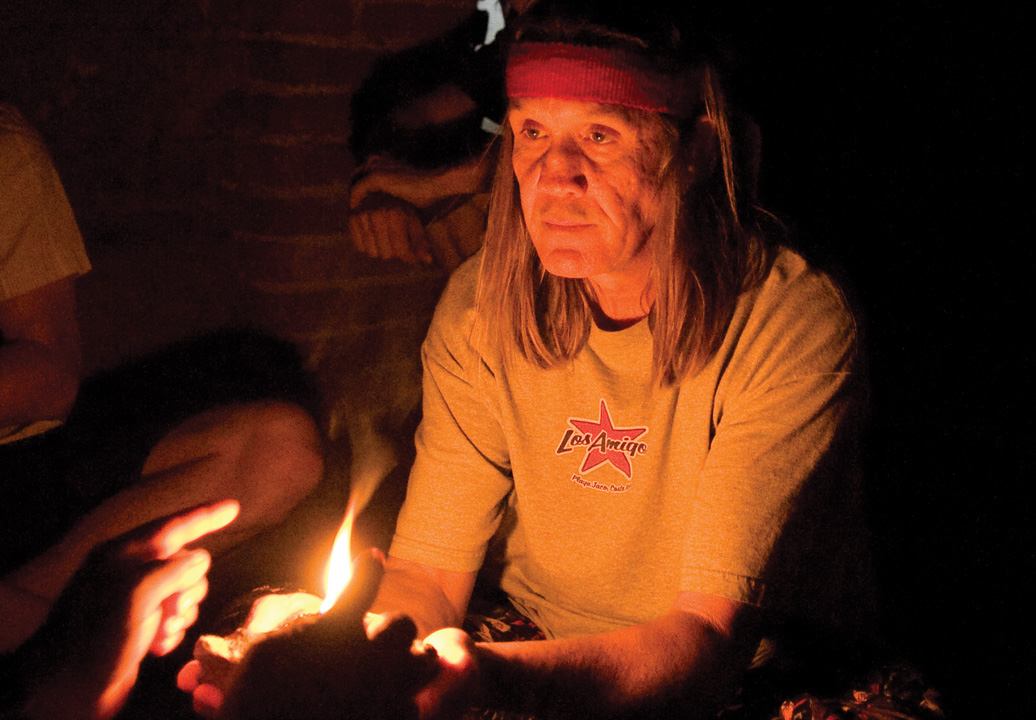
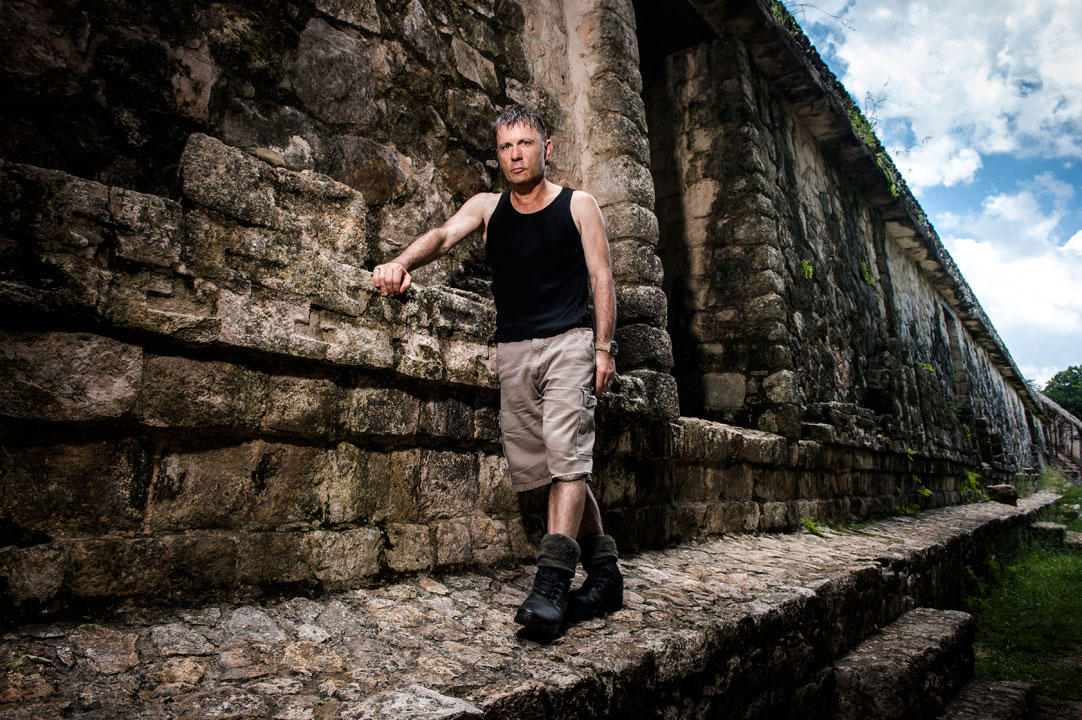
Now firmly on the road to recovery, Bruce Dickinson is living proof that one should never underestimate the resilience of the human body… or, more to the point, Iron Maiden’s extraordinary ability to keep forging ahead, regardless of what slings, arrows and unexpected explosions have been hurled their way. And in keeping with his band’s reliably humble and stoic approach to making music, Bruce is plainly unwilling to dwell on his misfortune or let any aspect of it stand in his way.
“The experience has been kind of life-changing, yes… but also no!” the frontman laughs. “You think, ‘That was a real pain in the arse!’ or a pain in the neck, quite literally in my case, and it’s brilliant to get through it, so let’s just crack on with the rest of life. My determination to get on with things is greater than ever.”
At this point, getting on with things presumably means taking The Book Of Souls out on tour in 2016 – a goal that must have added a little extra incentive to Bruce’s recovery. The details of the next Maiden show are still being ironed out, but what is obvious is that The Book Of Souls’ vivid imagery will lead to a truly spectacular stage production, in keeping with the same dizzyingly high standards that earned the band a Silver Clef Award from music therapy charity Nordoff Robbins for their “outstanding contribution to UK music” back in July. Outstanding? We should fucking say so. And then, if we cross our fingers and pray really hard to the metal gods, there might just be another epic, victorious tale to tell in a year or three. Would you seriously bet against them?
“To be there with these guys making this wonderful music after all these years, it’s an amazing feeling,” Nicko concludes. “We’ve still got this amazing voice, collectively, that the Maiden fans know and love, but we’ve still got new kids coming to our shows, too, and when they discover that we’ve been going for 35 years and we’ve got 16 studio albums… well, what a great legacy, you know?”
“We do what we want to do, and not many people can say that,” adds Steve. “Being paid to do your hobby, effectively, for as long as we have… it’s the best job in the world. We’ve made some great music and it’ll live forever, won’t it? But what matters now is getting out there and playing for the fans again.”
“Nothing is going to stop me getting on that stage,” concludes Bruce, with a defiant frown. “You would have to shoot me! Even then the others would drag the corpse on! People say, ‘Don’t you get bored of having to go on tour again?’ No! Never again will I ever say that I’m bored with the idea of going on tour with Iron Maiden. Let’s get it on, you know?”
THE BOOK OF SOULS IS OUT SEPTEMBER 4 VIA PARLOPHONE
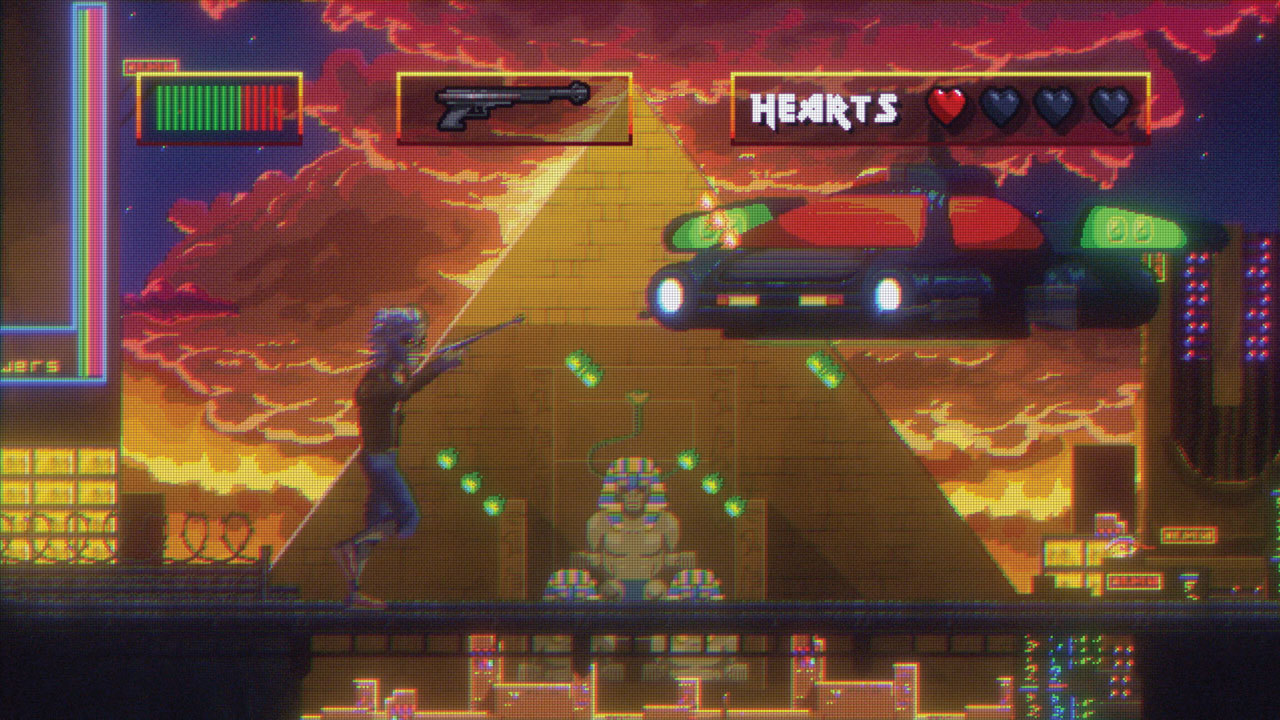
HALLOWED BY THY GAME
Six months in the making, the Speed Of Light video is a dream come true for anyone who grew up on Iron Maiden and videogames in the 80s and 90s. It features Eddie rushing through time and space into game worlds depicting classic Maiden art, including a Donkey Kong-style platformer with an 8-bit Eddie scaling the venue from the Bring Your Daughter… To The Slaughter sleeve; a Mortal Kombat-themed fighting game bringing to life the Run To The Hills artwork; and a side-scrolling shoot ’em up through the Somewhere In Time cityscape. The responsibility for making the video fell to comic book author, game designer, guitarist and Maiden fan since the age of 12, Llexi Leon, creative director at the band’s management company, Phantom. We sat down for a chat about the making of a masterpiece…
How important were the lyrics in determining the video’s visual style? “The structure and concept of the video was certainly guided by the lyrical content. The line, ‘A single particle of me’ is what inspired the idea of Eddie being broken down into single pixels – or voxels in three dimensions – and ‘I’m on the edge that you can’t see’ was a striking visual in the context of a space-time narrative. Beyond the sci-fi premise, some of the lyrics seem subtly self-referential to earlier material. It was this combination of retrospective and futuristic nods that inspired me to imagine Eddie on a digital adventure, jumping through wormholes to explore the worlds of Iron Maiden in various time periods.”
How did you come up with the videogame concept? “There had to be trials and challenges for Eddie in each world, so the idea of structuring it like a videogame came quite naturally. It seemed a perfect fit – 40 years of metal explored alongside four decades of videogames! I pitched this idea to Rod Smallwood and the guys in the band. They loved the concept and asked if I could pull it off… I figured it was Iron Maiden, so I had to pull it off, and it had to be the best thing I’ve ever done! The video is littered with nods to Iron Maiden artwork – whether it’s the poses of the characters at certain key moments or imagery woven into the background art, there’s a lot to look out for in the video.”
How much were the band involved? “I worked very closely with Rod and Dave [Shack, MD of Phantom Music] throughout the treatment stage and then, together with Bruce and Steve, we zeroed in on the direction we would take. Once things were further along and the band had seen what we’d produced, they gave feedback, which we incorporated alongside some finishing touches. Steve really wanted Eddie up front and centre when the main riff drops in, so that’s where we’ve digitised Eddie’s jawless face to launch right towards the viewer as he bursts through the wormhole for the first time. Bruce thought it would be great to tie the first vocal scream with the visuals, and I was very excited by that, as I had this vision of Eddie being torn apart and pixelated as Bruce screamed – giving the opening a bit of a techno-horror twist!”
Will there be any merchandise linked in to the video? “When the arcade is revealed at the end of the video, you may notice it has some kick-ass custom artwork of the new Speed Of Light Eddie on the side of the cabinet. This was drawn up by my friend Santi Casas, and helped drive the video production in its early stages. ACME Archives reproduced it as a limited-edition silkscreen print using UV active neon inks which we just debuted at San Diego Comic Con in July – it’s awesome [it is, see left]. Once the video was done, I commissioned a painted version to bring that conceptual imagery closer to the finished product.”
This is Maiden’s first promo clip for nearly five years. Was there a feeling that the band wanted to ‘up their game’? “It’s no secret that the band don’t like doing videos because they just hate miming. The last few – especially The Final Frontier [a mini movie about a pilot called Cleaner Six who’s being chased by Eddie] – addressed this, but I feel it’s been hard for the videos to bring Eddie to life in the same way the artwork does. Computer animation is now at the point where Eddie can be realistically depicted in all his gruesome glory, and done so within the production constraints of a music video. It seemed like the right moment to unleash Eddie on an unsuspecting public once more!”
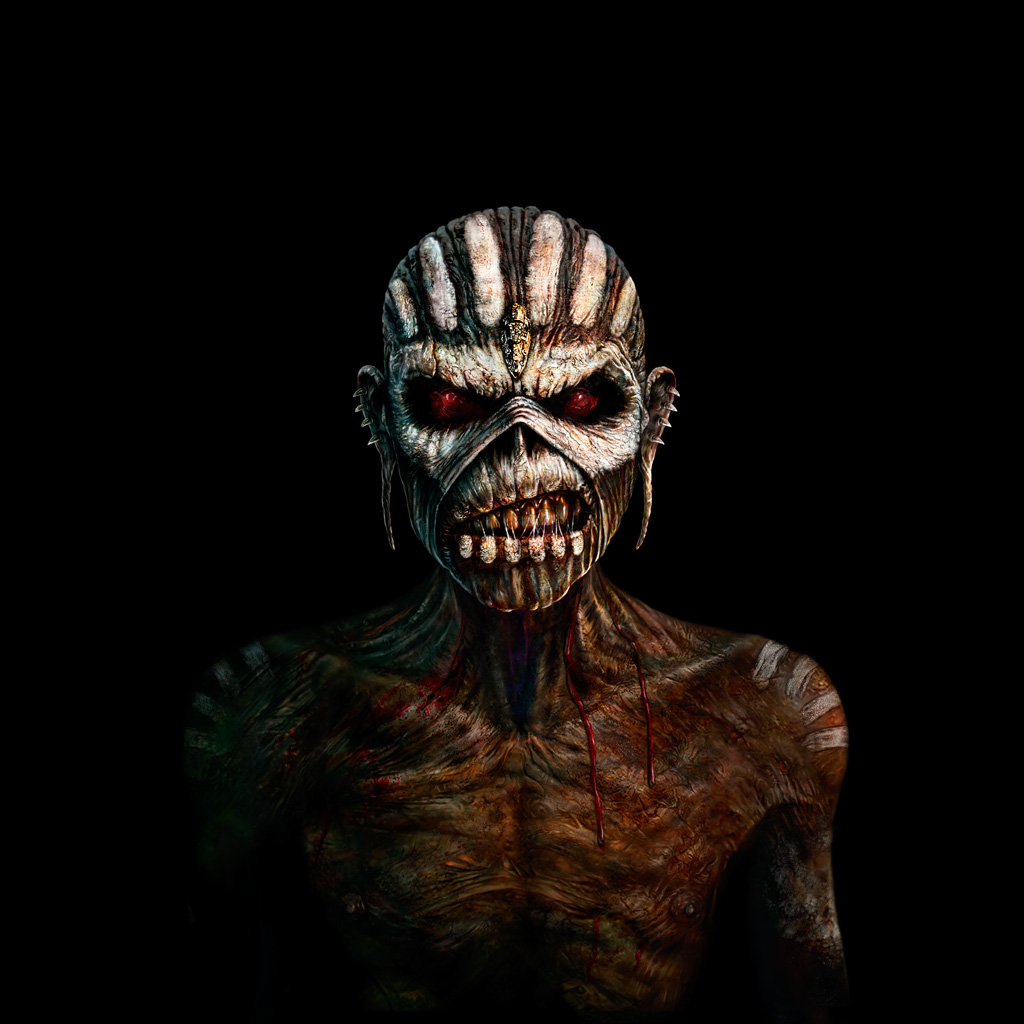
EDDIE: JUNGLE WARRIOR
Rock illustrator Mark Wilkinson first worked with Iron Maiden in 1992, when he designed a winged Eddie for their Donington poster. He also made the artwork for The Wicker Man in 2000, and a Maiden anniversary metal box package in 2002. Now creator of The Book Of Souls Eddie, he tells us everything you need to know about the new tribal mascot…
It’s the first complete Eddie Mark’s worked on “This was the first time I’d had a chance to work with a full- figure Eddie, as the previous versions I illustrated were not humanoid. I wanted to try a different approach to the way he looked… dark, skeletal, flesh literally flayed off or hanging loose, with every crevice looking as convincing as possible.”
Eddie’s appearance combines ancient cultures “For the skin, I looked at old medical books, and at the old torture method of flaying that was used thousands of years ago in the Middle East, Africa and America. I looked at Mayan ritualistic dress and body markings, but leaned more to the voodoo look – it looked more malevolent.”
Anything too place-specific was ditched “Some ideas got scrapped – mainly markings or tattoos which were too specific to one period or tribe. The intention was to make Eddie look terrifying but not to be slavishly accurate to any one culture, so the tribal markings are generic, made-up… they are neither Baron Samedi or Mayan priest, but a mash-up of both.” ** Eddie’s skin was the most time-consuming aspect** “I worked on the skin of the face for a long time, with the undead-lines of previous Eddies now looking like body scarification. I wanted the body paint to look like it had seeped into the cracks, rather than sit on the top.”
FOR MORE ON MARK, SEE WWW.THE-MASQUE.COM
DOUBLE VOLUME
We take you inside the two-disc glory of The Book Of Souls.
DISC 1 1. If Eternity Should Fail [8.28] An eerie, psychedelic intro gives way to one of the heaviest, most joyously epic and anthemic album openers that Maiden have ever written. Bruce’s voice is massive, the riffs likewise.
2.Speed Of Light [5.01] The first single and an instant classic Maiden singalong, redolent of 2 Minutes To Midnight but somehow sharper, more succinct and boasting as much energy as Maiden did back in 1984. Yep, it’s that good. ** 3.The Great Unknown [6.37]** A mid-paced slow-burner with a rumbling intro from the bass of Steve Harris and a wildly atmospheric end section. Like everything on this album, it has a huge chorus and oozes grandiose intent.
4.The Red And The Black [13.33] On any other Maiden album, this would have been the centrepiece. Nearly 14 minutes of classic Maiden tropes, reshaped into something vital and adventurous. The ‘whoa-oh-oh’ bit will get you. Guaranteed.
5.When The River Runs Deep [5.52] A bludgeoning intro and shades of Dio’s 80s work make this one of the most pointedly metallic songs Maiden have recorded in recent times. Another hook-laden gem from Steve and Adrian.
6.The Book Of Souls [10.27] Spooky atmospheres abound as the towering title track thuds and snarls into view. Since ‘epic’ is now such an overused word, we clearly need a more evocative alternative to describe the sheer hugeness of this paean to the Mayans.
DISC 2 7. Death Or Glory [5.13] Surely destined to be a big live favourite when Maiden hit the road, this ripping World War I yarn welds an infectious Running Free-like rhythm to a chorus the size of Jupiter.
8. Shadows Of The Valley [7.32] Dark hues and a faint hint of otherworldly menace permeate this mid-paced maze of riffs and hooks. Like a snappier reading of Montségur (from 2003’s Dance Of Death), this is one for the devoted headbangers.
9. Tears Of A Clown [4.59] Not a Smokey Robinson cover, but a subtly idiosyncratic tribute to the tortured soul of a comedian that revels in moments of rhythmic trickery while wielding yet another enormous chorus.
10. The Man Of Sorrows [6.28] Written by Dave and Steve, this moody, blues-tinged number is all dark textures and woozy crescendos, with a triumphant but sorrowful refrain that confirms that, despite the health issues that would soon descend upon him, Bruce was on the vocal form of his life when Maiden recorded their new magnum opus.
11. Empire Of The Clouds [18.01] Massive? Overblown? Theatrical? Tick all of those boxes. This is, perhaps, both Bruce’s magnum opus and the most daring thing Iron Maiden have ever recorded. The doomed final journey of the R101 airship brought vividly to life across 18 minutes of audacious, progressive and endlessly fascinating heaviness.
SOMEWHERE BACK IN TIME
Mayanist scholar Simon Martin clues us in on the civilisation that helped inspire The Book Of Souls.
As the expert who translated Maiden’s songtitles into hieroglyphs for the sleeve artwork, Simon Martin is well placed to fill us in on the history of the Maya.
“The Maya lived in Central America, including what is now southern Mexico,” he explains. “They were identifiable from 1200BC, but their heyday was roughly 200-900AD. Over time, they became much more sophisticated and built larger and larger temples, made more complex artwork and created this incredibly elaborate writing system.”
While The Book Of Souls is not a tightly bounded concept album, it contains themes of spirit and destiny. A central figure in the Maya world was the god of maize, their staple diet. In an apt metaphor for agriculture, it was believed that the maize god had entered beneath the Earth and then undergone a series of trials in the underworld, before eventually rising (plant-like) into the sky. For the Maya people, the journey of the soul after death followed a similar path.
“It’s very different from, say, the Christian sense of redemption,” Simon explains. “You did your best in life, but the key thing was how good you were in surviving these trials in the underworld. Basically, everybody had to meet these lords of the dead who would effectively keep you there unless you could escape. And you didn’t escape because you were stronger than they were – you escaped because you could outwit them.”
A recurring theme in modern explorations of the Maya is human sacrifice, and in some of Maiden’s new artwork, Eddie is pictured holding a bloody knife. Simon is keen to point out that the scale of this has been exaggerated in modern films (such as the Mel Gibson-directed epic Apocalypto), which are more inspired by the Aztecs.
“The Maya were not atypical compared to a lot of other ancient civilisations,” he considers. “The Carthaginians [whose city-state of Carthage was founded on the north African coast around 800BC], for example, were into sacrificing babies and all sorts of weird stuff. But there certainly was an idea of payment. People were killed and presented as a kind of offering, as were animals and even flowers and incense. The world of the natural and the supernatural was one of contract – if you wanted something, you had to give something back.”
